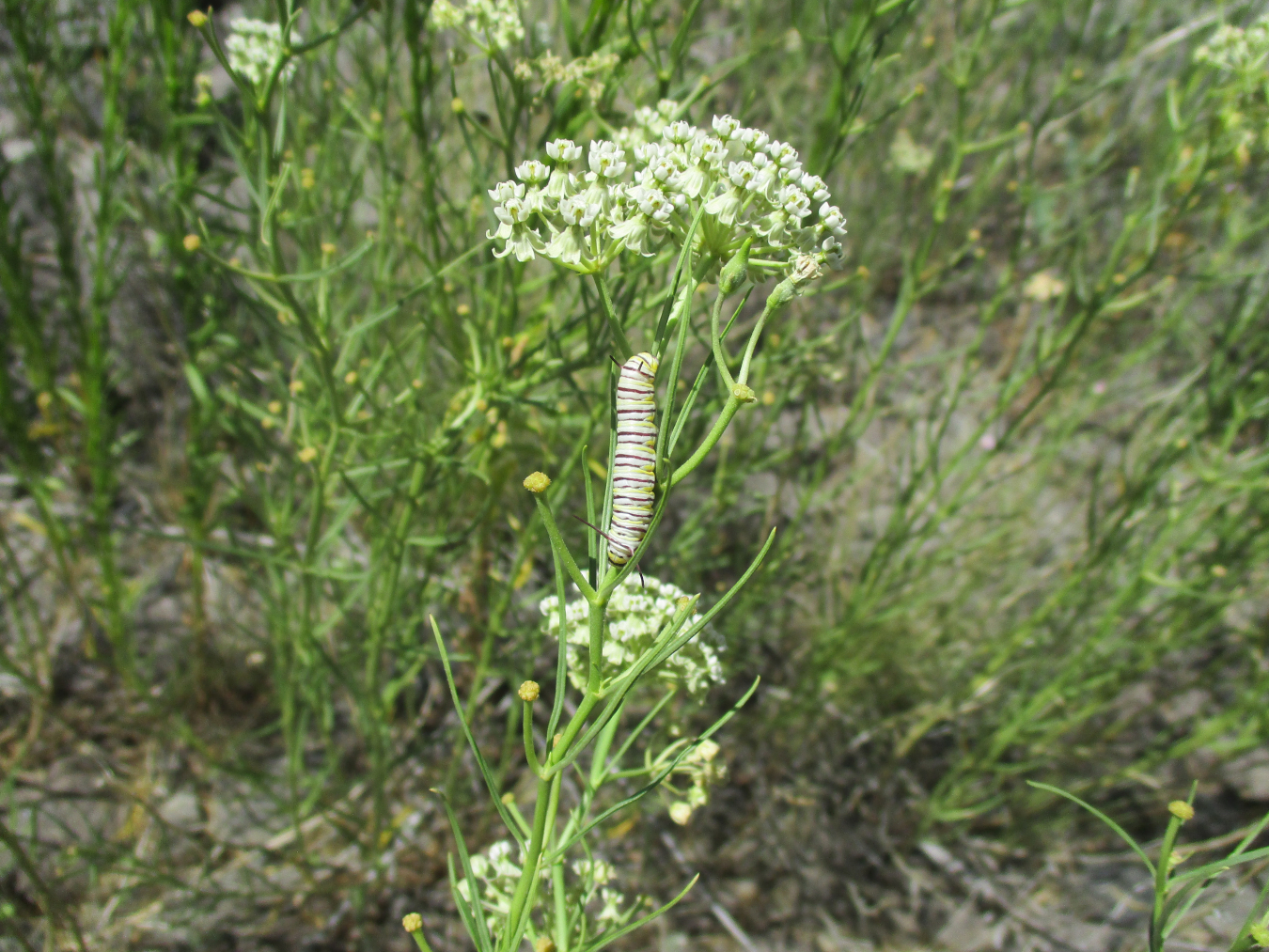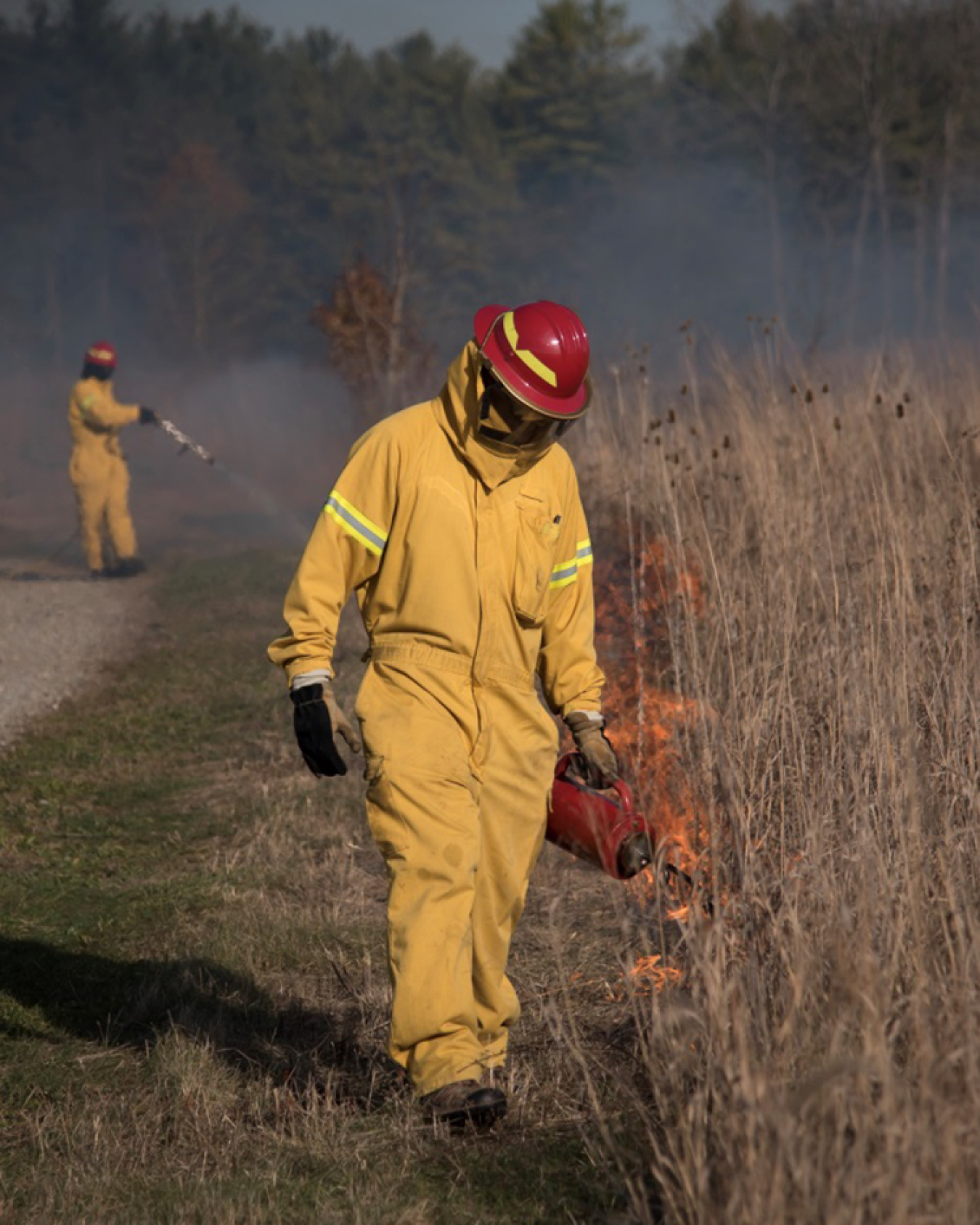In 2020, LM created a plan for defining and guiding existing natural resource management efforts.
April 14, 2021Each U.S. Department of Energy Office of Legacy Management (LM) site has unique natural resource management needs. At many sites, LM manages a range of natural resources, including vegetation, wildlife and their habitat, special-status species, invasive species, pollinators, surface and groundwater, wetlands, and resources related to fire ecology. Managing natural resources at LM sites is a complex task. Sites span a large geographic area with differing resources, surrounding landowners, and current and former uses that include ranching, agriculture, mining, oil and gas development, conservation, and recreation.
Because of the complexity across LM sites, the need for natural resource management is decided on a site-to-site basis. Different types of management include environmental monitoring and/or research, controlling vegetation or wildlife (such as invasive weeds and nuisance wildlife), actively managing natural resources (such as habitat enhancement), and providing education and outreach.
In 2020, LM created a Natural Resources Management Plan (NRMP) to define and guide existing natural resource management efforts across LM sites. The plan’s objectives are aligned with LM’s mission of ensuring the future protection of human health and the environment. The plan also supports the Ecosystem Management Team goals of optimizing ecological services and promoting conservation reuse on LM sites. Other objectives defined in the NRMP include:
- Applying sustainable management practices to: protect and restore native ecological communities, create and enhance habitat for special-status species and pollinators, control damage to natural resources from invasive and nuisance species, and improve habitat and diversity through proactive measures.
- Partnering with other agencies, nonprofit groups, and adjacent landowners.
- Using an adaptive management approach to adjust management decisions based on monitoring, observation, and scientific data, and including ecological baseline characterizations at LM sites pre- and post-transition.
LM works to protect and conserve natural resources at sites spanning diverse ecological systems throughout the United States. In the Southwest, the landscape is characterized by mesas, cliffs, canyons, and valleys, and contains arid grasslands and shrublands along with pinyon-juniper and ponderosa pine forests. An LM survey in 2019 found habitat for monarch butterflies at the Bluewater and Ambrosia Lake sites in New Mexico. The monarch butterfly is a critical pollinator species and a candidate species under the Endangered Species Act. LM is currently promoting best management practices to promote habitat for the insect.

A Monarch caterpillar on a horsetail milkweed plant at LM’s Bluewater, New Mexico, Disposal Site.
Sites in Wyoming are dominated by high-elevation, arid grasslands and shrublands. Much of the region is used for livestock grazing. The Bear Creek, Spook, and Shirley Basin South sites are grazed by livestock and have established grazing leases under the LM beneficial reuse program. LM works with local ranchers and conducts periodic rangeland health assessments to ensure the land can sustainably support livestock and ecologically stable conditions can be maintained. Rangeland health assessments help LM manage and protect the land while allowing for a multi-use approach at the sites.

A state endangered cave salamander at LM’s Fernald Preserve, Ohio, Site.
The Fernald Preserve, Ohio, Site is one of LM’s largest sites and is located within a transitional ecoregion between the Eastern Corn Belt Plains and the Interior Plateau. Over the past centuries, the indigenous forests of this region were cleared or altered for industrial, agricultural, and urban development. Given the site’s transitional character and land use history, ecological restoration projects at Fernald have incorporated a combination of native and non-native species to establish a unique and varied community of ecosystems within the boundaries of the preserve. The preserve offers habitat for a large variety of plants and wildlife, including special-status species such as the American burying beetle, the northern long-eared bat, and the cave salamander.
Where possible, LM is moving toward a beneficial reuse land management approach to optimize land use by placing sites in the most beneficial use consistent with the tenets of sustainability, good management practices, and LM’s mission requirements.
“Conservation efforts and managing our natural resources is essential to long-term stewardship of our LM sites to ensure current and future utilization of our public lands,” said Joyce Chavez, the LM Reuse Asset manager.
The objectives developed in the NRMP help to define responsibilities for managing natural resources. Managers can use these objectives and other information described in the NRMP to plan or expand natural resource management activities at a given site. Training is being created to help familiarize LM staff with the NRMP and to increase knowledge of natural resources and management efforts across LM sites.

A prescribed burn at LM’s Fernald Preserve, Ohio, Site.

